Email Sender Reputation Matters. Here’s How You Can Improve It!

If you’re a marketing professional who runs email campaigns frequently, here’s an easy question for you: What’s the most critical part of running an email campaign well? There are a few answers many of us would immediately give: the email subject line, email design, or email copywriting. You might even insist it’s all about email personalization.
In our opinion, it’s email sender reputation.
It may be a term you are already familiar with, but there’s a chance you may not know how vital it is to have great sender reputation. Depending on how good or bad it is, your emails will reach one of the three locations: the inbox, the spam folder, or, in a worst-case scenario, the mail provider’s trash bin.
This guide covers the A to Z of email sender reputation and shares best practices to keep your emails out of the dreaded spam folder.
What is Email Sender Reputation?
Email sender reputation is the trustworthiness or email marketing credibility of a sender’s domain and IP address.
This metric is tracked by both email service providers (ESPs) and internet service providers (ISPs). Based on various factors, you are assigned a rating, and this number plays a crucial role in email deliverability.
Email deliverability is the ability of an email to reach your customer’s inbox instead of being marked as spam or rejected outright.
Why Email Marketing Sender Reputation is Critical
Email service providers like Gmail, Microsoft, or Apple have various safeguards in place to ensure irrelevant or malicious emails don’t reach their customers. And we think that is fantastic — imagine how much more problematic email marketing would be if spammers were allowed to send spam!
Your email marketing sender reputation helps you navigate the measures put in place by such mailbox providers.
Protecting and refining it directly impacts email deliverability. A strong sender reputation or email score rating bypasses spam filters, ensuring your messages reach inboxes. Conversely, a poor reputation leads to spam folders, hindering campaign effectiveness and ROI. Effective sender reputation email marketing requires consistent attention to best practices.
What is Email Reputation or Email Address Reputation?
Email reputation, or email address reputation, is the same as your sender reputation — it’s a measure of how trustworthy your email sending practices are.
ISPs use it to determine if your emails deserve to reach inboxes. A high reputation email address boosts deliverability, while a poor one leads to emails being blocked. Your email reputation score dictates whether you are seen as a trusted sender or a poor reputation sender.
How to Improve Email Reputation
If you think about it, it’s pretty simple to fix email reputation: Treat your readers as people, and not just email marketing subscribers.
Our top suggestions are:
- Think beyond basic email campaign metrics,
- Cultivate genuine email relationships,
- Send only relevant, anticipated content to engaged recipients,
- Treat inboxes like valued spaces, not marketing dumps,
- Let your email quality speak for itself.
For more technical steps, refer to the section below titled “How to Improve Sender Reputation.”
Email Sender Score
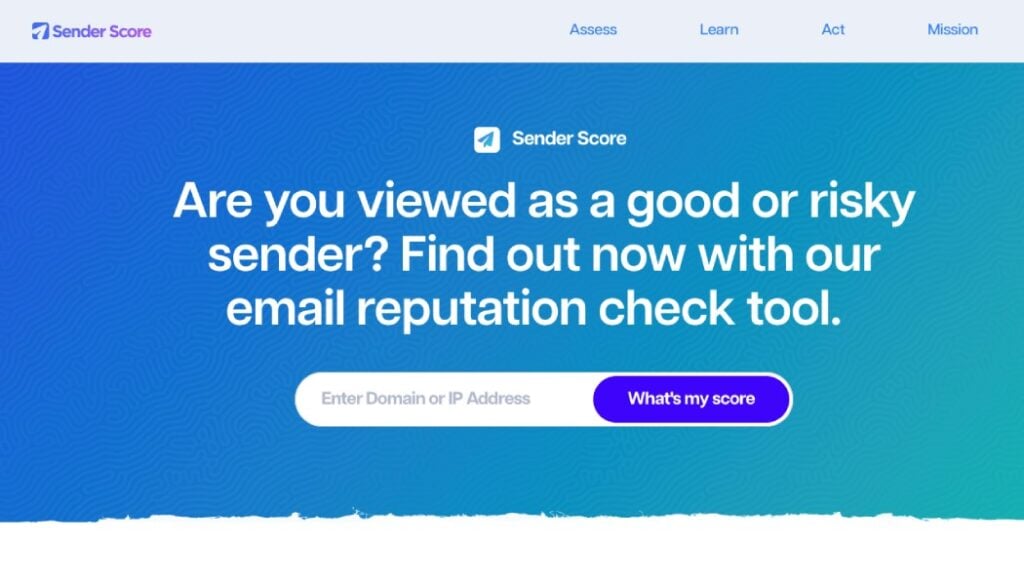
Both ISPs and ESPs have different methods of measuring your reputation. They assign email marketers a score, commonly known as an email sender score, to measure your sender reputation.
Also called an email trust score, it determines whether your email is eligible to make it to the inbox. As we mentioned earlier, if your sender score is poor, it will be deleted automatically by the spam filters of the ESP or even the ISP.
Sender Score Metrics
Sender score metrics provide valuable insights into your email reputation, helping you understand how email providers view your sending practices.
The senders score is calculated based on various factors, including spam complaints, engagement rates, and list hygiene. Monitoring these metrics is crucial for maintaining healthy deliverability.
| Metric | What do the metrics indicate? | The impact on reputation |
|---|---|---|
| Spam Complaints | The percentage of recipients marking your emails as spam. | Negative |
| Engagement Rate | The percentage of recipients opening and clicking your emails. | Positive |
| List Hygiene | The quality and validity of your email list, including bounce rates. | Good list hygiene is essential for a solid reputation. |
| Sending Volume | The consistency and gradual increases in the number of emails you send. | Too low or too high volume impacts sender reputation. |
How to Improve Sender Score
Improving the sender reputation score hinges on refining email best practices: clean lists, relevant content, and proper authentication.
Consistent engagement and low spam complaints boost your reputation. It’s about building trust with email providers. While these core principles are key, nuanced strategies exist, and we explain these in detail further below.
First, let’s look at why you should care about poor email sender reputation and address it urgently.
Why You Should Check Email Sender Reputation Regularly
If you view email marketing as just another part of your marketing operations, you are truly missing out because it translates to incredible ROI when executed properly.
Maintaining a good email marketing sender score is one of the most basic principles of Campaign Refinery; we understand how critical email marketing reputation is for consistent inboxing.
Poor sender reputation can have detrimental effects on your overall email marketing efforts. You must maintain a schedule to check email sender score.
Let’s take a look at what can happen if you don’t track it periodically:
- More emails go to spam: Even a simple email reputation can be damaged when most emails go to spam.
- Higher bounce rates: A poor sender reputation can lead to a higher rate of email bounces — this includes both soft bounces and hard bounces. Your own ESP may take action against you to defend their domain sender score.
- Limitations in reach: If your emails are constantly routed to spam, you’re missing out on opportunities to engage with your target audience.
- Dip in open rates: Low sender reputation means your emails rarely make it to your customers’ inboxes, which leads to low open rates. This reduces the effectiveness of your campaigns.
- Damage to your brand reputation: If your customers see you as spammy, it can severely damage your brand’s reputation and credibility.
- Blacklisting: If you keep ignoring your poor sender reputation, it can lead to your domain or IP address being blacklisted.
- Wasted resources: If any of the above is happening, and your emails are marked as spam consistently, you are pretty much burning through email marketing costs without results.
Ready to track your sender reputation? We cover that in the upcoming section.
How to Check Your Email Sender Reputation
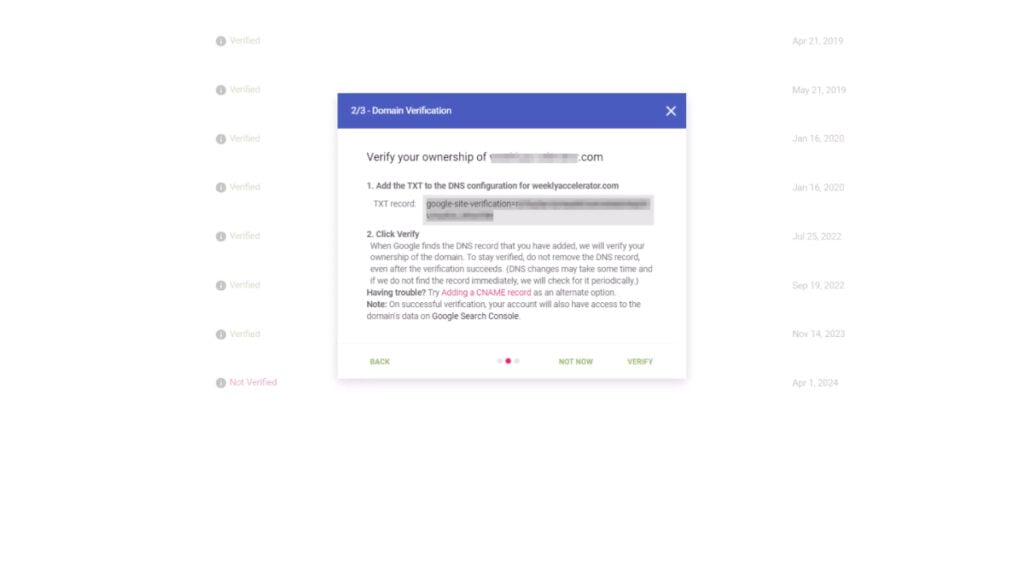
A surefire way to know that your email sender reputation score is getting tarnished is seeing changing patterns in your email campaign reports. That’s why you need tools to help you run an email sender reputation check.
If you observe dwindling open rates or drops in email deliverability, it’s as good a time as any to analyze your reputation. Due to low engagement, mailbox platforms may send some of your emails to the spam folder.
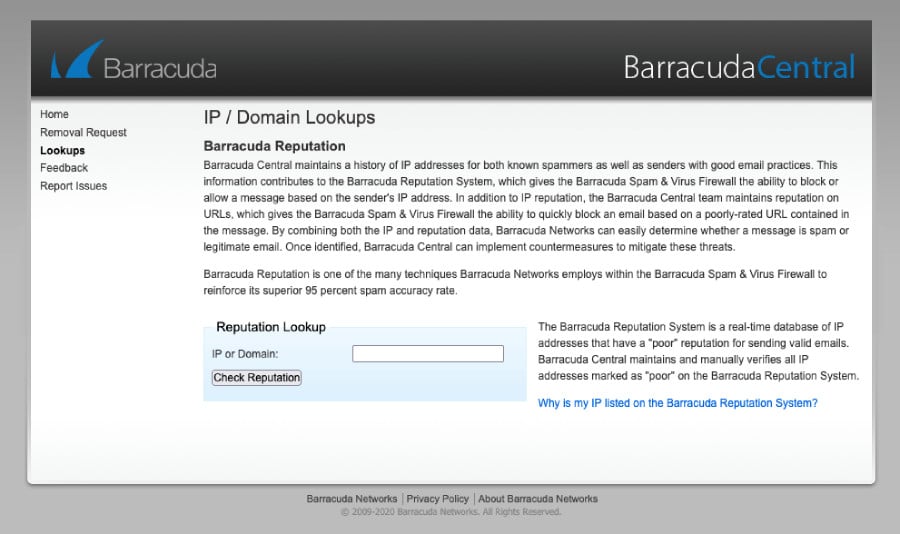
Below is a list of tools you can use to get a better idea of your sender reputation. These will also give you insight into your IP reputation, plus you can also track email domain reputation.
Before you rush to use any of them, you should know they simply provide a rough estimate of your email sender reputation score; different mail providers evaluate sender reputation in different ways. The best option from this list would be Google Postmaster Tools, as it’s likely a vast majority of your email list is Gmail accounts.
A good time to mention some exciting news: This Google reputation check feature is going to be an integrated part of the Campaign Refinery dashboard very soon!
These tools can help you check email sending reputation:
- Google Postmaster Tools,
- Barracuda Central,
- Smart Network Data Service (SNDS) by Microsoft,
- Talos Intelligence by Cisco,
- Validity Sender Score.
Of course, the most effective way to measure your reputation would be to study the performance of your email campaigns and take a closer look at the bounce rates and engagement scores.
Let’s now review the steps you can take to protect your sender reputation.
How to Protect Sender Reputation
Maintaining a healthy sender reputation is paramount for high email delivery rates and consistent deliverability.
ISPs and email clients analyze various factors to determine the trustworthiness of your messages. Understanding these elements is the first step toward safeguarding your ability to reach your audience.
Key factors influencing mail reputation include:
- Domain reputation,
- Email IP address reputation,
- Consistency of email sends,
- Volume of emails sent,
- Email list hygiene,
- Email bounce rates,
- Email engagement,
- Email spam complaints,
- Email security,
- Email authentication,
- Email unsubscribe rates.
Keeping a sharp eye on all of these is crucial to maintaining and protecting a strong sender reputation. From the list above, domain reputation and IP reputation are the stats you need to pay the most attention to.
To protect your sender reputation, you need to work on all the items in the list above — let’s study how.
Protect Your Email Sender Reputation With These Steps
Follow these guidelines to ensure your sender protection does not unexpectedly dip.
1. Email Consistency and Volume
If you aren’t sensible about the frequency of your email and how consistently you email your customers, it’s going to affect your email sender reputation.
You need to commit to sending emails regularly and ensure you don’t send them multiple offers or start sending more emails than normal. ESPs keep an eye out for sudden changes in email volume, so beware.
2. Email List Quality
You might think you got a great deal on an email list you recently purchased, but buying email lists from unknown online sellers is akin to shooting yourself in the foot. These lists are notorious for both invalid emails as well as spam traps, and there is no way you can manually check these.
You would have to comb through the data using an email validation service. Customers of Campaign Refinery don’t need to worry about this; our automated list-cleaning tool is available to all our clients.
3. Email Bounce Rates
Bounce rates refer to the percentage of emails that are returned as undeliverable to the sender. As both ISPs and ESPs track hard and soft bounce rates, these are pretty bad for your sender reputation.
This is why it’s critical to track them and take these email addresses off your valid email address list promptly.
4. Email Engagement
Low open rates can be indicative of your email customers finding your content boring or spammy, whereas high open rates indicate you’re on track.
An even better indicator of your email content being relevant would be click-through rates (CTR). In short, a dropping open rate, or poor engagement, can be a red flag to ESPs, bringing down your sender score.
5. Spam Reports
This one is fairly straightforward — if your email recipients keep marking your emails as spam, it’s a matter of time before the ESP or ISP starts sending your emails to the spam folder.
6. Email Unsubscribes
It may not be as harsh as being marked as spam, but if a lot of recipients unsubscribe from your emails, it can send a signal to the mailbox service to bring your sender reputation down.
7. Email Authentication
Email authentication protocols exist to help prevent email spoofing and phishing emails; it makes sense for you as an email marketer to implement them.
Configuring and maintaining these authentication protocols boosts the trustworthiness of your brand’s emails.
Now, on to two important pillars of email sender reputation: domain rating and IP rating. While both these factors are evaluated separately — you can have a good IP rating and a poor domain rating, and vice versa — they both need to be fairly high to ensure good email deliverability.
How Domain Reputation Affects Email Marketing Sender Reputation
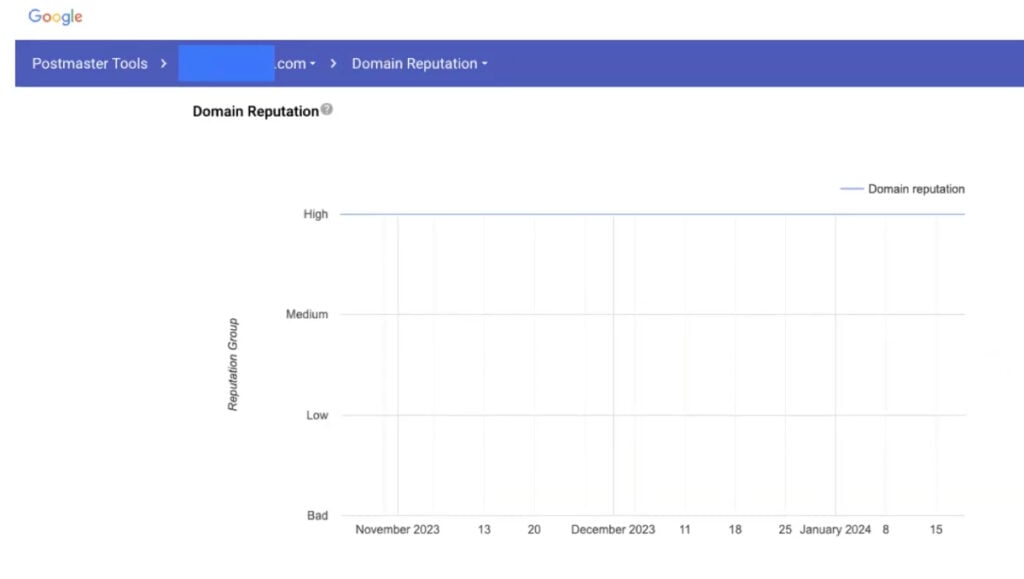
Domain reputation isn’t just the credibility of your website; it’s the overall trust score of your domain. This email domain score is formulated based on the history of emails sent from your domain, as ESPs analyze the sending patterns of previous campaigns and the email engagement metrics on those emails. Accordingly, mail providers assign an email domain spam score.
You might be wondering if campaigns run by other employees of your company affect you; the answer is yes.
As long as someone is sending low-quality emails from your domain, this brings down your sender domain reputation or domain score. This then negatively affects your email sender reputation. Accordingly, you will need to work to improve email domain reputation.
This is why your company’s email marketing strategy needs to be uniform across the board. There should be a quality check on all types of email campaigns, regardless of which department is running it. This also applies if your domain is used by multiple small businesses; any of their irresponsible spamming is going to hurt you as well.
How Campaign Refinery Helps You Manage Email Marketing Domain Reputation
At Campaign Refinery, we work with high-volume email senders as well as low-volume small businesses. Once you’re onboarded, you’re in the company of expert email marketers; you can enjoy the full benefits of a great sender reputation.
We also insist our clients authenticate their domains to improve email reputation. This keeps their domain and IP reputation numbers high, which in turn leads to outstanding email deliverability: our clients report an instant open rate increase of up to 37%, with their reputation as high as ever.
Email Marketing IP Reputation
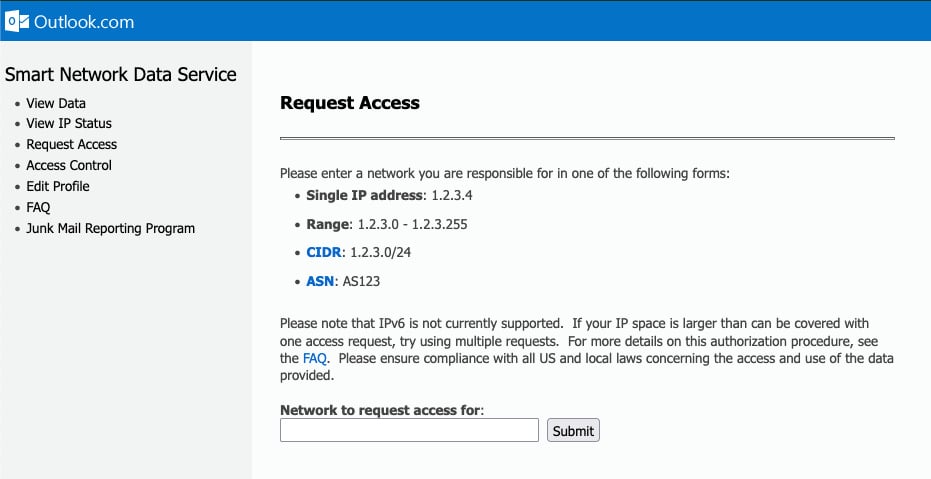
Like your domain score, the email IP reputation is another factor you need to be aware of. If ISPs observe your IP sending lots of emails recklessly, this will reflect on your senderscores. So, if you share an IP with other people who aren’t as cautious as you, consider a dedicated IP address; it can protect your sender score reputation.
This does not mean a new IP address comes with an excellent IP reputation. As there is no data for ESPs to assign an IP reputation score to you, you have to be careful in the email campaigns you run at the beginning so you consistently get good scores and build the reputation of your IP address.
How to Improve IP Reputation
To improve email IP reputation, focus on consistent, legitimate email practices.
This includes:
- Proper authentication (SPF, DKIM, DMARC),
- Clean email lists,
- Warm up your email domain and email IP address gradually with slow volume increases.
Regularly monitor blacklists and address issues promptly. If you find your email IP address on a blacklist, contact them for details on the sender score reputation network removal process.
Remember, these actions contribute to a larger goal: working on overall sender reputation.
How to Improve Email Sender Reputation

There’s no shortcut or a simple trick to resolving an issue with your email sending reputation, so we recommend you do it the right way.
If you follow the steps below, you should see the results in time.
- Study your email metrics: Analyze your email campaign metrics.
- Switch up your IP address: If shared IPs are causing issues, use dedicated IPs. When you land a new IP, follow a good strategy to increase email reputation.
- Domain reputation fixes: Use your own domain, always. You can exit your current domain, if necessary, and then slowly warm up the new domain by sending out emails to your most engaged users.
- Use a good quality email marketing platform: At Campaign Refinery, we ensure all our clients are top-quality businesses, which ensures our reputation remain high.
- Keep your lists clean: This is a critical one. Grow your email lists organically and maintain them. Remove inactive users.
- Provide value: Always keep the content relevant and interesting. Study engagement metrics to understand what works and what doesn’t.
- Use excellent copy: Hiring cheap — and hence, inexperienced — writers means your copy is of low quality, and there’s a strong chance your writer will end up using spam trigger words.
- Audience segmentation: Personalized content is something you should strive for. Only send your customers relevant emails; irrelevant ones will drive them to hit the Unsubscribe button or the “Mark as Spam” button.
- Implement authentication protocols: Another great way to build online trust in your emails is to implement email security protocols on your sending domain.
A critical aspect of sender reputation is the email platform you use. Here’s why Campaign Refinery is the best platform for inboxing.
Campaign Refinery Offers the Best Email Deliverability
We’re sure you’ve now come to appreciate how critical email sender reputation is for the success of your campaigns.
At Campaign Refinery, we take care of the heavy lifting for you. By truly understanding the value of sender reputation, we decided to address it at the root level — our platform is optimized for maximum deliverability.
And it’s not all theory; Campaign Refinery’s inbox placement is the best in the industry.
Campaign Refinery offers other key advantages:
- A credit-based system, with one credit equaling one email send.
- Unlimited contact lists at no additional cost.
- A powerful visual automation builder.
- An email validation tool that automatically scrubs your email lists
- Access to most top-tier features within the base plan.
- A powerful visual automation builder.
- A robust built-in segmentation and tagging system.
- API access is included in all plan levels.
Discover A-grade email marketing performance on our platform — more pricing and feature details here.
We’ve got everything you will need to be a top-tier email marketer. And to aid you on your journey, we would love to give you access to a master guide on inboxing.
Improve Sender Reputation With Our Guidebook
Besides using Campaign Refinery as your email services partner, there are other ways to amplify your email marketing ROI.
In our free guidebook for email marketing — The Inbox Formula — we’ve covered the most effective, tried and tested techniques to help you achieve higher CTRs and open rates.
Written by our founder and email expert, Travis Ketchum, this free guidebook covers best practices for email campaigns, offers industry insight, and even explains some common blunders email marketers make.
You can download The Inbox Formula here.
Until next time — happy emailing!
FAQ
What is Sender Reputation?
Sender reputation is a score assigned by ISPs to gauge the trustworthiness of an email sender.
How Does Email Deliverability Sender Reputation Work?
Poor email deliverability negatively impacts sender reputation by signaling to ISPs your emails are unwanted, leading to further filtering and blocking.
What are Email Reputation Services?
Email reputation services monitor and manage sender reputation to improve email deliverability.
What is an Email Deliverability Score?
An email deliverability score measures the percentage of emails successfully reaching recipients’ inboxes.
What is an Email Domain Rating?
An email domain rating assesses the overall reputation of a sending domain.
What Does Email Server Reputation Mean?
Email server reputation reflects the trustworthiness of an email server used to send emails.
How to Improve Sender Score?
Improve your email sending score by consistently sending wanted, authenticated emails to engaged recipients.





